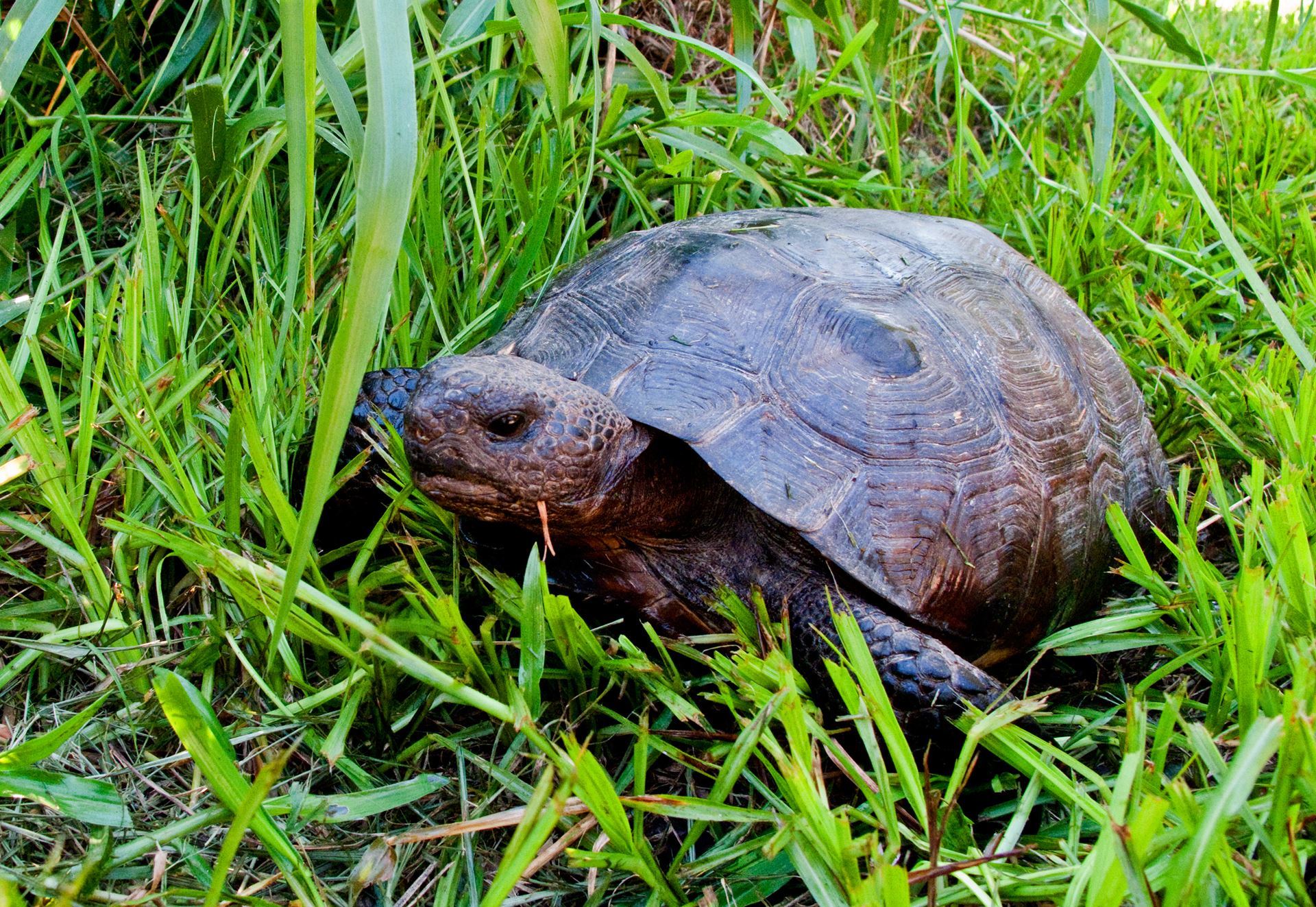Gopher Tortoise
With their stumpy legs and curved shell, gopher tortoises are obviously different from our iconic sea turtles but may also be seen in dunes and even on beaches. If you see one on the beach, let it be! They cannot swim and will wander for a while and head back to the dunes. They are found in forests, open areas, and yards where they dig their burrows for shelter and forage for low-growing plants. Their burrows are extensive (average 15 feet long and 6.5 feet deep) and provide habitat for more than 350 other species which gives them the title of keystone species. Gopher tortoises and their burrows are protected since they are listed as threatened under Florida rule. Adult tortoises are between 9 and 11 inches in length and are tan, brown, or grey while young ones may be more yellow-orange and brown. In the wild they may live between 40 and 60 years in the wild and breed between March and October with hatchlings emerging between August and November. They are threatened by habitat loss due to destruction and fragmentation, often by construction of residential homes which find gopher tortoise habitat ideal since it is high and dry. Road mortality and disease also threaten our iconic gopher tortoises. |
|

